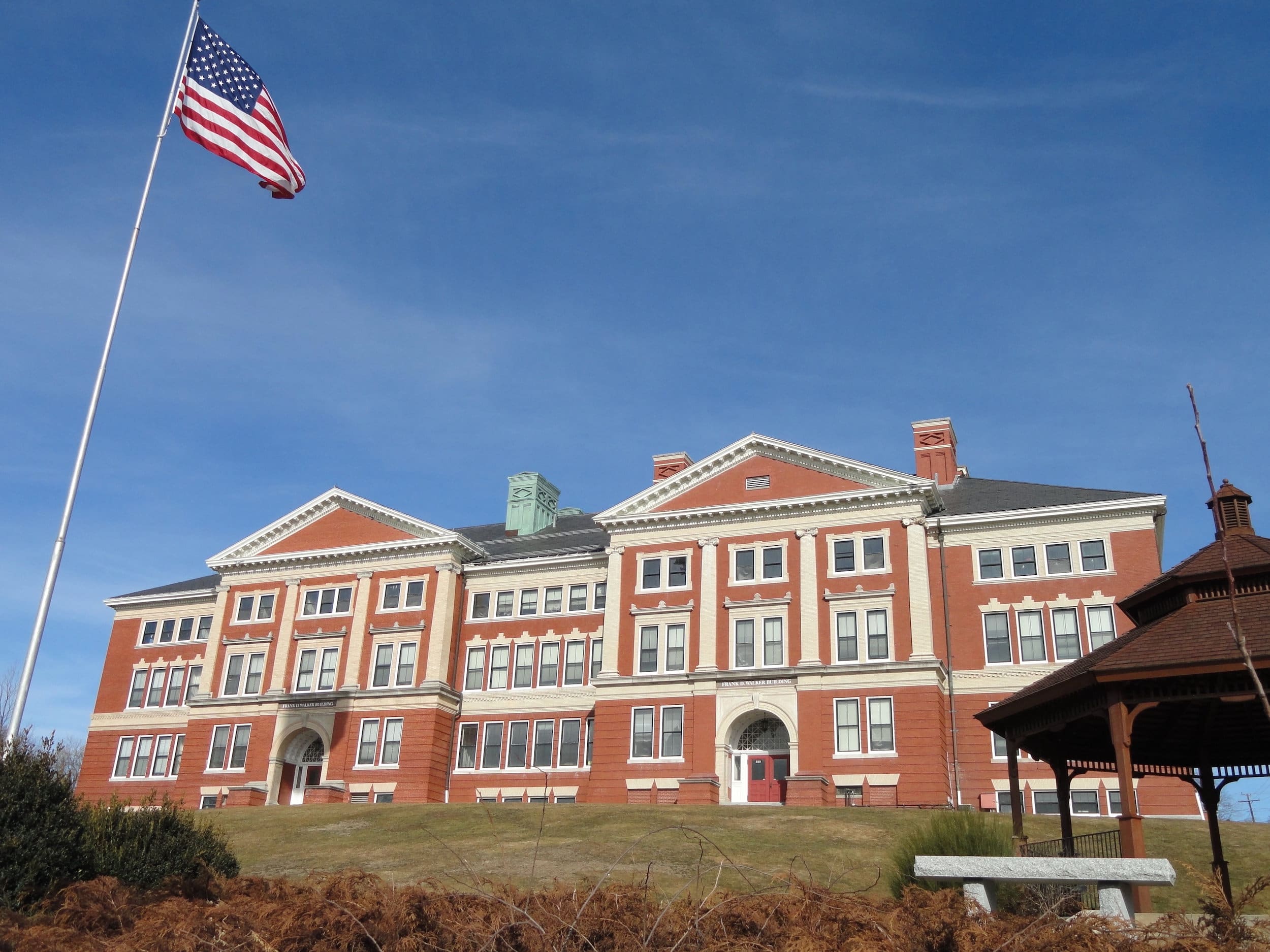
MARLBOROUGH – The backdrop of a steep, grassy hill alongside Main Street in the center of Marlborough is the stately red-brick Walker Building.
Originally constructed as the high school in 1897, the enormous building was not the first school sited upon this acre-plus lot. It was known as the Old Town Common, as the first meetinghouse was headquartered on this spot. Both public and private schools, including the elite Gates Academy, were erected, removed and expanded.
No nearby school had an addition larger than the former Marlborough High School, as it was doubled in size.
In 1924, a duplicate of this structure was attached to its twin half. It matched what had been constructed 25 years earlier, further emphasizing the symmetry of its neoclassical architecture, popular in the 1800s and 1900s. Colonial Revival is also used to describe the style.
Architect Charles E. Barnes designed the Walker Building, the Warren Block and the #2 Firehouse.
On top and in front are two low-pitched triangular gables, often used as elements in institutions of learning, such as schools, libraries and museums. Called pediments, they originated in ancient Greek and Roman temple architecture. Each is placed above an entablature, supported visually by decorative columns.
When school construction or municipal office renovation has been underway in Marlborough, the Walker Building is aptly used as a temporary staging area or to conduct double sessions. Marlborough Middle School was constructed ready to accept a growing population of students. From 1950 to 1990 the number of residents practically doubled.
In 2023 learning still takes place at this city building, as it is the temporary home for the Marlborough Public Library, which is undergoing major renovation. On the Walker Building’s second floor, the wide corridors have been set up with public access computers. Near the computers and unused front entrance are two detailed plaques. According to the 18” x 10” plaque, in May of 1980 the former school was renamed the Frank D. Walker Building to honor “a total public servant.”
Frank Walker served as mayor from 1966 to 1967 and, like other former mayors, continued his involvement in local politics by serving on the City Council before and/or after being mayor. He was councilor-at-large and a leader in Sudbury Laboratories.
Mayor Walker was instrumental in attracting large companies to settle in Marlborough: RCA, Honeywell and Massachusetts Container. He helped relocate Koehler Corporation to Felton Street and worked on preparing the “Farm Road School,” later called the Kane School. He worked on accommodating the new Holiday Inn, a Stop and Shop meat processing plant, three banks and the new state headquarters for the Jaycees.
In Walker’s inaugural speech, he announced that Marlborough’s “Radio Station WSRO has allotted me time on Saturdays at 12:15 to give a short report.”
Local programming, much of it live, also included a long-time show featuring Ed Bridges, who was a Marlborough Enterprise columnist focusing on politics. In 1973 a paperback booklet entitled “Gallery of Marlborough Mayors” was written by the radio personality.
Along the front staircase of City Hall, large, framed portraits of the mayors hang. Group portraits of the former Board of Aldermen and Common Council are added up on the third floor. Before Marlborough changed its form of local government with mayoral elections, these are the men who governed. Marlborough’s mayors also worked in a variety of occupations, ranging from attorneys and business executives to a teacher, doctor, barber, baker, butcher, and even a shoe worker.
The Walker Building won a preservation award from the non-profit organization Historic Massachusetts in 1994, thanks to city-initiated historic preservation and protection.
RELATED CONTENT
Sligo Hill Standpipe remains a testament to early industrial engineering











